JUDGMENT OF THE GENERAL COURT (Second Chamber)
22 June 2010 (*)
(Community design – Invalidity proceedings – Registered Community design representing communications equipment – Earlier international design – Ground for invalidity – No individual character – No different overall impression – Informed user – Degree of freedom of the designer – Evidence that the earlier design was made available to the public – Article 4(1), Article 6(1)(b) and (2), Article 7(1) and Article 25(1)(b) of Regulation (EC) No 6/2002)
In Case T‑153/08,
Shenzhen Taiden Industrial Co. Ltd, established in Shenzhen, Guangdong (China), represented by M. Hartmann and M. Helmer, lawyers,
applicant,
v
Office for Harmonisation in the Internal Market (Trade Marks and Designs) (OHIM), represented by A. Folliard-Monguiral, acting as Agent,
defendant,
the other party to the proceedings before the Board of Appeal of OHIM, intervener before the Court, being
Bosch Security Systems BV, established in Eindhoven (Netherlands), represented by C. Gielen, M. Bom and B. van Hunnik, lawyers,
ACTION brought against the decision of the Third Board of Appeal of OHIM of 11 February 2008 (Case R 1437/2006-3) relating to invalidity proceedings between Bosch Security Systems BV and Shenzhen Taiden Industrial Co. Ltd,
THE GENERAL COURT (Second Chamber),
composed of I. Pelikánová (Rapporteur), President, K. Jürimäe and S. Soldevila Fragoso, Judges,
Registrar: C. Kantza, Administrator,
having regard to the application lodged at the Court Registry on 25 April 2008,
having regard to the response of OHIM lodged at the Court Registry on 25 July 2008,
having regard to the response of the intervener lodged at the Court Registry on 4 August 2008,
further to the hearing on 19 January 2010,
gives the following
Judgment
Background to the dispute
1 The applicant, Shenzhen Taiden Industrial Co. Ltd, is the holder of the Community design registered under number 214/903-0001, filed on 11 August 2004, in respect of which it claims 22 April 2004 as the date of priority (‘the contested design’). The contested design, intended to be applied to ‘communications equipment’, is reproduced below:
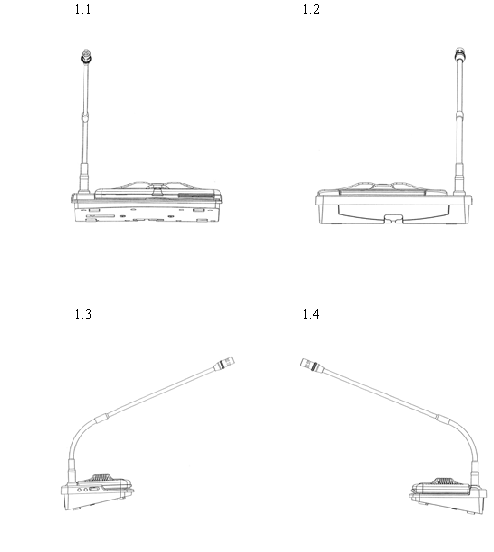
2 On 2 September 2005, the intervener, Bosch Security Systems BV, submitted an application at the Office for Harmonisation in the Internal Market (Trade Marks and Designs) (OHIM) for a declaration of invalidity of the contested design on the basis of Article 25(1)(b) of Council Regulation (EC) No 6/2002 of 12 December 2001 on Community designs (OJ 2002 L 3, p. 1). In the application for a declaration of invalidity, the intervener claimed that the contested design was not new and that it lacked individual character within the meaning of Article 4 of Regulation No 6/2002, read in conjunction with Articles 5 and 6 of that regulation.
3 In support of its application for a declaration of invalidity, the intervener relied on the international design registered on 17 May 2000, under No DM/055655, which was made available to the public by its publication in the Bulletin of the World Intellectual Property Organisation (WIPO) on 31 May 2001 and was to be applied to ‘units for conference systems’ (‘the international design’). The international design is reproduced below:
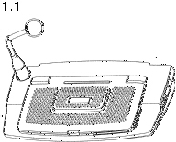
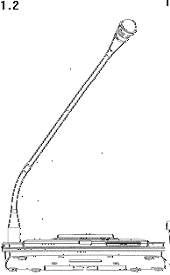
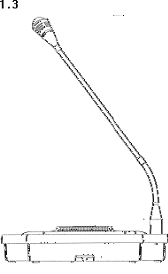
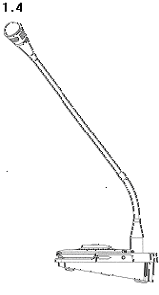
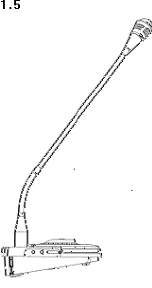

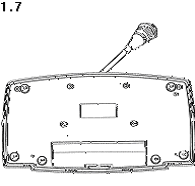
4 The intervener also submitted a brochure, press cuttings and advertisements dating from 2000 and 2001, reproducing the design of a conference unit (‘the design reproduced in paragraph 4’), which the intervener maintained was identical to the international design. The pictures provided by the intervener included the following views:

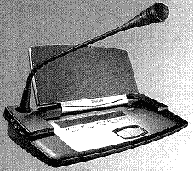
5 By decision of 15 September 2006, the Invalidity Division of OHIM rejected the application for a declaration of invalidity.
6 On 6 November 2006, the intervener filed a notice of appeal at OHIM against the decision of the Invalidity Division, pursuant to Articles 55 to 60 of Regulation No 6/2002.
7 By decision of 11 February 2008 (‘the contested decision’), the Third Board of Appeal of OHIM allowed the appeal. In comparing the contested design, on the one hand, and the international design together with the two views of the design reproduced in paragraph 4, on the other, the Board of Appeal found, first of all, that the contested design was new, since the designs at issue were not identical and the differences between them were not immaterial. The Board of Appeal went on to conclude, however, referring to the relatively wide degree of freedom in developing the design which was intended to be incorporated into a conference unit, that the differences between the designs at issue were not sufficiently noticeable to produce a different overall impression on the informed user. Consequently, the Board of Appeal concluded that the contested design lacked individual character.
Forms of order sought by the parties
8 The applicant claims that the Court should:
– annul the contested decision;
– order OHIM to pay the costs, including those incurred by the applicant in the proceedings before the Board of Appeal.
9 OHIM contends that the Court should:
– dismiss the action;
– order the applicant to pay the costs.
10 The intervener contends that the Court should:
– dismiss the action;
– uphold the contested decision;
– order the applicant to pay the costs, including those incurred by the intervener before the Board of Appeal and the Invalidity Division.
11 At the hearing, the intervener withdrew its second head of claim as well as its third head of claim to the extent that it related to the costs incurred before the Invalidity Division.
Law
12 The applicant puts forward two pleas in law, the first alleging infringement of Article 63(1) of Regulation No 6/2002, and the second alleging infringement of Article 4(1) and Article 6 of that regulation.
The first plea in law, alleging infringement of Article 63(1) of Regulation No 6/2002
Arguments of the parties
13 According to the applicant, the Board of Appeal infringed Article 63(1) of Regulation No 6/2002, in that it took into consideration facts for which no evidence had been provided by the intervener. First, the intervener did not prove that the brochure and other documentation featuring the design reproduced in paragraph 4 had been made available to the public, since it did not submit evidence establishing their date of publication and their addressees. Second, the intervener did not prove that the design reproduced in paragraph 4 was identical to the international design and, thus, did not prove the existence of one single earlier design. Whereas certain representations of the design reproduced in paragraph 4 show the conference unit with the speaker raised, the international design does not include any comparable representation.
14 OHIM and the intervener contest the applicant’s arguments.
Findings of the Court
15 According to the wording of the application, the first plea in law alleges infringement of Article 63(1) of Regulation No 6/2002, under which, in proceedings relating to a declaration of invalidity, the examination carried out by OHIM is to be restricted to the facts, evidence and arguments provided by the parties and the relief sought.
16 However, the applicant maintains, in essence, that there was insufficient evidence in relation to what the intervener presents as a single earlier design. Therefore, it should be considered that the first plea in law consists in two complaints alleging in actual fact, first, infringement of Article 6(1) and Article 7(1) of Regulation No 6/2002, as regards making available to the public the design reproduced in paragraph 4, and, second, infringement of Article 6(1) of that regulation with regard to the Board of Appeal’s equating the design reproduced in paragraph 4 to the international design.
– Making available to the public the design reproduced in paragraph 4
17 According to Article 6(1)(b) of Regulation No 6/2002, a registered Community design is to be considered to have individual character if the overall impression it produces on the informed user differs from the overall impression produced on such a user by any design which has been made available to the public before the date of filing the application for registration or, if a priority is claimed, the date of priority.
18 Article 7(1) of Regulation No 6/2002 states that a design is to be deemed to have been made available to the public if it has been published following registration or otherwise, or exhibited, used in trade or otherwise disclosed, before the date referred to in Article 6(1)(b) of Regulation No 6/2002, except where these events could not reasonably have become known in the normal course of business to the circles specialised in the sector concerned, operating within the European Union.
19 In the present case, it must be determined whether it is apparent from the evidence presented to OHIM that the design reproduced in paragraph 4 had been made available to the public before 22 April 2004, the date of priority claimed by the applicant for the contested design.
20 In that regard, it is apparent from the extract from the specialised Spanish magazine El Instalador de Telecomunicación, which was submitted by the intervener to the Invalidity Division, that the conference unit called ‘Concentus’, the external appearance of which corresponds to that of the design reproduced in paragraph 4, was presented to the public at the Matelec trade fair which took place in Madrid in 2000. The other advertisements and press cuttings submitted by the intervener to the Invalidity Division refer to a conference unit bearing the same name and include photographs which, although they are taken from different angles and with different levels of detail, correspond to the conference unit reproduced in the extract from the magazine El Instalador de Telecomunicación.
21 In those circumstances, it should be considered that the intervener established before OHIM that the design reproduced in paragraph 4 had been made available from 2000, at a trade fair and in the specialised press. The circles specialised in the conference units sector, operating in the European Union, follow the trade fairs and specialised reviews of that sector in the normal course of business.
22 Accordingly, it should be concluded that the intervener provided proof to OHIM that the design reproduced in paragraph 4 had been made available to the public before 22 April 2004, the date of priority claimed for the contested design. Accordingly, the design reproduced in paragraph 4 could be taken into consideration by the Board of Appeal and the present complaint must therefore be rejected.
– Equating the design reproduced in paragraph 4 to the international design
23 Since Article 6(1) of Regulation No 6/2002 refers to a difference between the overall impressions produced by the designs at issue, the individual character of a Community design cannot be examined in the light of specific features of various earlier designs.
24 Therefore, a comparison should be made between, on the one hand, the overall impression produced by the contested Community design and, on the other, the overall impression produced by each of the earlier designs legitimately relied on by the party seeking a declaration of invalidity.
25 The obligation to make a comparison between the overall impressions produced by the designs at issue does not preclude the possibility of taking into consideration, as representations of one and the same earlier design, features which were made available to the public in different ways, in particular, first, by the publication of a registration and, second, by the presentation to the public of a product incorporating the registered design. The purpose of registering a design is to obtain an exclusive right in particular to make and market the product incorporating it, which means that the representations in the application for registration are, as a general rule, closely related to the appearance of the product placed on the market.
26 In those circumstances, it should be ascertained whether, in the present case, the international design and the design reproduced in paragraph 4, as relied on by the intervener before OHIM, are actually representations of one and the same earlier design.
27 In that regard, an examination of the different views, submitted to OHIM, of the international design, on the one hand, and of the design reproduced in paragraph 4, on the other, does not reveal any features suggesting that the two designs differ in respect of the appearance of the product represented. Although it is true, in this context, that the representations of the international design do not include a view of the device with its cover raised and that the different views of the design reproduced in paragraph 4 generally present the device in that position, the fact remains that the presence of a hinged cover – which therefore can be raised – is apparent from views 1.1 and 1.6 of the international design.
28 Therefore, although the design reproduced in paragraph 4 includes supplementary features by comparison with the international design, in respect of the inside of the cover and the upper surface of the body of the device, which is under the cover, it comprises all the aspects of the appearance of the international design.
29 In addition, the applicant merely challenges the evidence that the international design and the design reproduced in paragraph 4 are identical, in general terms, without presenting either arguments relating to the specific characteristics differentiating them, or other facts which suggest that these are not actually two representations of one and the same design.
30 In those circumstances, the conclusion must be that the Board of Appeal was entitled to find that the international design and the design reproduced in paragraph 4 were different representations of one and the same earlier design (‘the earlier design’).
31 Consequently, the present complaint must be rejected and, accordingly, the first plea in law must be rejected in its entirety.
The second plea in law, alleging infringement of Article 4(1) and Article 6 of Regulation No 6/2002
Arguments of the parties
32 The applicant claims that the Board of Appeal infringed Article 4(1) and Article 6 of Regulation No 6/2002 in holding that the contested design lacked individual character given the overall impression that it produces on the informed user.
33 First, in the information technology equipment sector, the freedom of the designer is restricted by the functionality of those devices as well as a general trend favouring small, flat, rectangular devices, often including hinged elements.
34 Since the informed user is familiar with the products at issue, he is aware of the constraints mentioned above. Therefore, in the overall impression produced by a design, he will attach more importance to the features which are aesthetic, arbitrary or unusual than to functional features.
35 Secondly, given the constraints and the trend to which the configuration of a conference unit is subject, the overall impression produced by the contested design is not determined by its basic configuration or by the details relating to functional elements. Therefore, in the informed user’s assessment, the contested design will be characterised from an aesthetic point of view, in particular, first, by the asymmetrical appearance produced by the combination of a hinged speaker on the right side and a small panel on the left side, next, by a decoration in the form of a stylised eagle on the cover of the hinged speaker on the top of the device and, lastly, by the design of the microphone head and the microphone stem base.
36 Thirdly, regarding the comparison between the contested design and the earlier design, the Board of Appeal based its decision on the similarities dictated by functional or technical considerations, and not on the overall impression in which the features with an aesthetic impact are more important. The designs at issue differ specifically in respect of such features, since the earlier design is characterised by a symmetrical arrangement of its various components and it is not decorated with a stylised eagle on its upper side.
37 Similarly, the designs at issue differ in respect of several details which are of some importance in the overall impression. Those differences concern the shape of the ventilation holes in the speaker, and the shape of the microphone, the microphone stem, the sides of the conference unit’s case and its rear flank.
38 The applicant adds that the presence, in both conference units, of a hinged speaker which can be raised is a purely functional feature, which can be found in many devices in the information technology sector, such as laptops and mobile phones. In the same way, the microphone should be placed on the left side, in order not to obstruct the opening of the speaker and to take into account the fact that most users are right-handed. For the same reason, card slots should be placed at the front right side.
39 Furthermore, the argument that the differences between the covers are no longer visible when the covers are raised is not relevant, since it applies to only one of the seven views of the contested design and is not therefore based on the overall impression produced by it. In addition, the decoration in question is visible even when the cover is raised, since it would not be covered by any other element at the back of the device.
40 OHIM and the intervener contest the applicant’s arguments.
Findings of the Court
41 According to Article 4(1) of Regulation No 6/2002, a design is to be protected by a Community design to the extent that it is new and has individual character.
42 As has already been recalled, it is apparent from Article 6(1)(b) of Regulation No 6/2002 that a registered Community design is to be considered to have individual character if the overall impression it produces on the informed user differs from the overall impression produced on such a user by any design which has been made available to the public before the date of filing the application for registration or, if a priority is claimed, the date of priority. Article 6(2) of Regulation No 6/2002 also states that, in assessing that individual character, the degree of freedom of the designer in developing the design must be taken into consideration.
43 Finally it is apparent from recital 14 in the preamble to Regulation No 6/2002 that, when assessing whether a design has individual character, account should be taken of the nature of the product to which the design is applied or in which it is incorporated, and in particular the industrial sector to which it belongs.
44 In the present case, as is apparent from the examination of the first plea in law, the earlier design was made available to the public before 22 April 2004, the date of priority claimed for the contested design.
45 In those circumstances, it must be examined whether, from the point of view of the informed user and taking account of the degree of freedom of the designer of a conference unit, the overall impression produced by the contested design differs from that produced by the earlier design.
– The informed user
46 With regard to the interpretation of the concept of informed user, the status of ‘user’ implies that the person concerned uses the product in which the design is incorporated, in accordance with the purpose for which that product is intended.
47 The qualifier ‘informed’ suggests in addition that, without being a designer or a technical expert, the user knows the various designs which exist in the sector concerned, possesses a certain degree of knowledge with regard to the features which those designs normally include, and, as a result of his interest in the products concerned, shows a relatively high degree of attention when he uses them.
48 However, contrary to what the applicant claims, that factor does not imply that the informed user is able to distinguish, beyond the experience gained by using the product concerned, the aspects of the appearance of the product which are dictated by the product’s technical function from those which are arbitrary.
49 In the present case, the Board of Appeal found, in paragraph 18 of the contested decision, that the informed user might be ‘anyone who regularly attends conferences or formal meetings at which the various participants have a conference unit with a microphone on the table in front of them’.
50 That definition corresponds to the interpretation of the concept of informed user set out above. A conference or meeting participant uses a conference unit in accordance with its purpose, which is to facilitate, by virtue of the transmission of communications and the associated functions, such as voting or the identification of persons, the exchange of views and information between the participants. In the same way, due to his regular participation in conferences or meetings, the informed user knows the various models of conference units and the features which they normally have. Furthermore, to the extent that the user must familiarise himself with the different functions and the interface of a conference unit so that it can fulfil its function, he will show a relatively high degree of attention when he is faced with the products concerned.
– The degree of freedom of the designer
51 In paragraph 21 of the contested decision, the Board of Appeal found that, although certain features must be present in a conference unit if it is to perform its function, the degree of freedom of the designer of a conference unit was nevertheless relatively wide.
52 In order to challenge the validity of that conclusion, the applicant puts forward, first, the fact that many features of a conference unit as well as their configuration are dictated by the technical function of the device and, second, the existence of a general trend favouring small, flat, rectangular devices, often including hinged elements.
53 With regard to the first factor, it is admittedly true that, in order to fulfil its essential function, a conference unit must have, at the very least, a speaker and a microphone, directed in such a way that the user can hear the sound reproduced by the speaker and his speech can be captured by the microphone. Similarly, buttons which are accessible to the user are necessary, in particular, in order to turn the microphone on and to regulate the volume of the speaker. Furthermore, to the extent that conference units also have associated functions, features such as voting buttons, the screen and the card slot may also prove necessary from a functional point of view.
54 However, as OHIM and the intervener have contended, those restrictions concern the presence of certain features in the conference unit, but do not have a significant impact on their configuration and, therefore, on the form and general appearance of the conference unit itself. In particular, it does not seem that a hinged element would be necessary in order to ensure any of the device’s functionality.
55 That conclusion is borne out by the design corpus, as submitted by the intervener to OHIM, which shows conference units of varying shapes and configurations that differ perceptibly from those used in the contested design. Therefore, depending on the model, the microphone is placed on a stem, or not, on the left, or the right or in the middle of the body of the device. In the same way, if the card slot is normally placed on the right, it is generally not integrated into the speaker of the conference unit but in the actual body of the device. In addition, the presence of any hinged element is the exception rather than the rule.
56 By contrast, the applicant did not produce any evidence substantiating its assertion that technical or functional requirements considerably restrict the degree of freedom of the designer of a conference unit.
57 In those circumstances, that assertion cannot be accepted.
58 With regard to the alleged general trend favouring small, flat, rectangular devices, often including hinged elements, it should be observed that the question whether a design does or does not follow a general design trend is relevant, at the most, in relation to the aesthetic perception of the design concerned and can therefore, possibly, have an influence on the commercial success of the product in which the design is incorporated. By contrast, it is not relevant in the examination of the individual character of the design concerned, which consists in verifying whether the overall impression produced by it differs from the overall impressions produced by the designs made available earlier, irrespective of the aesthetic or commercial considerations.
59 Moreover, the applicant has not substantiated the existence of the trend which it invokes, since it did not present examples of conference units with the characteristics that it highlights. In addition, the plausibility of its assertion is called in question by the design corpus submitted by the intervener to OHIM. The material communicated shows conference units of various shapes, rectangular, triangular or round, of various sizes, most of which are not fitted with a hinged speaker or any other hinged element.
60 The applicant mentions further, in that context, laptops and mobile phones with hinged screens, and flat‑screen televisions. However, since the assessment of the individual character of a design must take into consideration the nature of the product in which it is incorporated, those examples are not relevant.
61 A hinged screen allows the size of the device to be reduced, and size is an essential characteristic in the case of laptops and mobile phones. Similarly, a flat screen allows the depth of a television set to be considerably reduced and, therefore, makes it easier to position it. By contrast, a conference unit is generally not designed to be portable and the choice of a flat form does not have significant consequences with regard to the space necessary for its installation. Therefore, it does not seem that a conference unit would be subject to the same limitations as the devices referred to by the applicant.
62 Having regard to the above, it must be concluded that the Board of Appeal did not err in finding that the degree of freedom of the designer of a conference unit was relatively wide.
– The comparison of the overall impressions produced by the two designs at issue
63 In view of what has just been stated as to the degree of freedom of the designer of a conference unit, it must be considered that the overall impression produced by the contested design is determined by the following features:
– a rectangular body, the upper surface of which slopes towards the user;
– a hinged rectangular speaker covering a large part of the body’s upper surface and incorporating a card slot;
– a panel covered by the hinged speaker when it is folded down, with a number of buttons and screens;
– a hinged microphone on a stem, placed on the left side.
64 In addition, a stylised decoration is situated on the lid of the speaker. However, although that feature plays a part in the overall impression produced by the contested design, its role is less important than that of the features listed in paragraph 63 above.
65 As the Board of Appeal noted in paragraph 20 of the contested decision, when the conference unit is in use, the speaker is raised in order to be able to fulfil its function. Consequently, the decoration at issue is on the back of the device and therefore outside the user’s immediate field of vision, which means that it will not have any major impact on the user’s perception. The user may, at most, perceive the same decoration on the backs of the devices of the other participants facing him. However, such a perception will generally take place at a distance, which means that the detail of the configuration of the lid of the speaker will be less visible.
66 It should also be observed that, contrary to what the applicant claims, taking into account the reduced visibility of the lid of the speaker is not contrary to the rule that the overall impression produced by the contested design on the informed user should be assessed. That impression must necessarily be determined also in the light of the manner in which the product at issue is used, in particular on the basis of the handling to which it is normally subject on that occasion.
67 The other features highlighted by the applicant are not relevant. First, the slightly asymmetrical aspect of the position of the hinged speaker is considerably less striking than the presence of such a speaker in itself. Furthermore, even if it were accepted that the informed user perceives the asymmetry of the conference unit as a significant characteristic, this will be so, most of all, due to the lateral and therefore asymmetric position of the stem of the microphone.
68 Second, the form of the microphone head and the base of the microphone stem are minor elements of the appearance of a conference unit which will not attract the attention of the informed user, as the Board of Appeal noted in paragraph 19 of the contested decision.
69 With regard to the overall impression produced by the earlier design, it is essentially determined by the features listed in paragraph 63 above. The body of the unit is basically rectangular, and its upper surface slopes towards the user and is fitted with a hinged speaker. The speaker has the same rectangular form and also incorporates a card slot which has the same external appearance. The panel situated under the speaker corresponds to the panel in the same position in the contested design, in respect of both the shape of its different elements and their configuration. Like the contested design, the earlier design is fitted with a microphone on a stem, placed on the left side.
70 As the Board of Appeal stated in paragraph 20 of the contested decision, the only difference between the two designs at issue which could have some relevance concerns the lid of the hinged speaker since, in the earlier design, it does not have the stylised decoration present in the contested design.
71 However, first, that difference is not particularly pronounced, since the covers of both designs are embossed and the decoration of the contested design is highly stylised.
72 Second, as noted in paragraphs 64 and 65 above, the importance of that differentiating factor is reduced because of the reduced visibility of the conference unit’s cover once the device is in use.
73 Therefore, it should be considered that the stylised decoration on the contested design cannot offset the similarities found and is not, consequently, sufficient to confer individual character on the design.
74 The other differences relied on by the applicant, in respect of the shape of the ventilation holes in the speaker, and the shape of the microphone head, the base of the microphone stem, the sides of the conference unit’s body and its rear flank, are immaterial in the overall impression produced by the two designs at issue. Those differences are not sufficiently pronounced to distinguish the two devices in the perception of the informed user, especially since they concern for the most part features of a conference unit which do not attract the attention of such a user.
75 In view of the above, it must be concluded that the contested design and the earlier design produce the same overall impression on the informed user. Therefore, the Board of Appeal was correct to reach that same finding in paragraph 20 of the contested decision and to conclude that the contested design lacked individual character within the meaning of Article 6 of Regulation No 6/2002.
76 The second plea in law must thus be rejected and, as a result, the action must be dismissed in its entirety.
Costs
77 Under Article 87(2) of the Rules of Procedure of the Court, the unsuccessful party is to be ordered to pay the costs if they have been applied for in the successful party’s pleadings. Since the applicant has been unsuccessful, it must be ordered to pay the costs in accordance with the forms of order sought by OHIM and the intervener.
78 Furthermore, under Article 136(2) of the Rules of Procedure, costs necessarily incurred for the purposes of the proceedings before the Board of Appeal of OHIM are to be regarded as recoverable costs. Consequently, it is appropriate to order the applicant to pay the costs incurred on that occasion by the intervener, in accordance with the form of order sought by the latter.
On those grounds,
THE GENERAL COURT (Second Chamber)
hereby:
1. Dismisses the action;
2. Orders Shenzhen Taiden Industrial Co. Ltd to pay the costs, including the costs necessarily incurred by Bosch Security Systems BV for the purposes of the proceedings before the Board of Appeal of the Office for Harmonisation in the Internal Market (Trade Marks and Designs) (OHIM).
Pelikánová | Jürimäe | Soldevila Fragoso |
Delivered in open court in Luxembourg on 22 June 2010.
[Signatures]